contact@bauriwelfarefoundation.com


contact@bauriwelfarefoundation.com
+91 9090050205
Have u ever found your grandma running after a doctor or medical store for every now & then? We have so many wonderful natural remedies all around for any burns, cut, cold, fever, sneezes and more.
It is very important to have medicinal plants around the house cause you never know when you might need them.
So here is a list of plants that have the highest medicinal value compared to the other million species around the world worth planting around the house.

There are four types of tulsi mentioned in ayurvedic texts ie Rama, Krishna, Vana & Kapoor Tulsi.
For over the centuries Tulsi (the queen of herbs) has been known for its remarkable healing properties.

The aloe vera grows only under the sun with well-drained dry or moist soil. Although the plant tastes like a turd, it’s still edible. The sap from aloe vera is extremely useful to speed up the healing & reducing the risk of infections for :

The gotu kola acts on various phases of connective tissue development and stimulates healing of :

It grows in almost any type of soil condition. It has no problem with nutritionally poor, very acidic or very alkaline soils, just as long as it’s moist. Well known as a remedy for skin problems, the deep-orange flowered pot marigold variety is applied externally to :

You must have used basil lot many times in food but have you ever tried it to heal flatulence? It has the power to treat:

It is mostly known for its strong antiseptic nature. It is wonderful when it comes to the treatment of:

Rosemary is the great reviver. This perennial woody herb stimulates energy and optimism and sharpens memory and concentration by bringing more oxygen to your brain, according to UMMC. It’s a wonderfully stimulating alternative to caffeine when you need that second wind!
A row of these long-lived and drought-tolerant plants makes a beautiful, bee-friendly, evergreen hedge. You may only need one plant in your garden, as a little bit goes a long way.

Long recognized for its sweet perfume, lavender also boasts medical benefits as a nervine and mild antidepressant. UMMC suggests adding it to your bath to alleviate stress, tension, and insomnia. It's also used in creams to treat sunburns and acne.
Woody lavender plants prefer hot, sunny, and dry environments. The fresh flowers are tasty in small doses when added to salads, honey, butter, lemonade, and even shortbread cookies. If you’re crafty, try sewing up an herbal heating pad or eye pillow with the fragrant dried flowers.
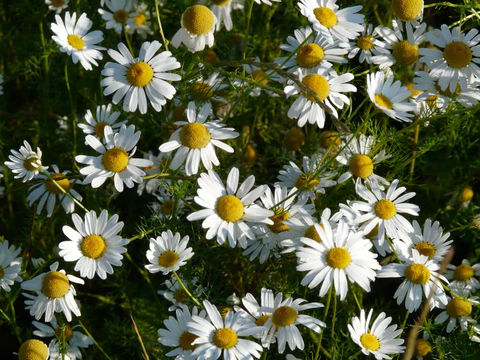
Delicate, apple-scented chamomile demonstrates that mildness does not mean ineffectiveness. Primarily grown for its small, yellow-bellied flowers, NCCAM reports that chamomile is one of the best children’s herbs for treating colic, nervous stress, infections, and stomach disorders.

Fenugreek seeds are nourishing and taken to :
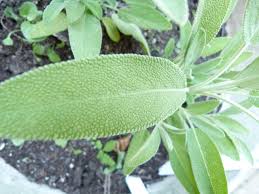
Salvia, the Latin name for sage, means ‘to heal’. Internally, the sage is used for :

Peppermint is sometimes regarded as ‘the world’s oldest medicine’, with archaeological evidence placing its use at least as far back as ten thousand years ago. Pepeprmint are naturally high in manganese, vitamin A and vitamin C. Crushed leaves rubbed on the skin help soothe and relax the muscles. Infused peppermint leaves are used to :

The reason the plant is called lemon balm is because of the lemon minty scent of the leaves. The flowers, which appear during the summer, are full of nectar. The crushed leaves, when rubbed on the skin, are used as :

A bitter tasting plant that requires a lot of sun, the cardoon has become important as a medicinal herb in recent years following the discovery of cynarin. The cardoon leaves, best harvested before flowering, helps to :
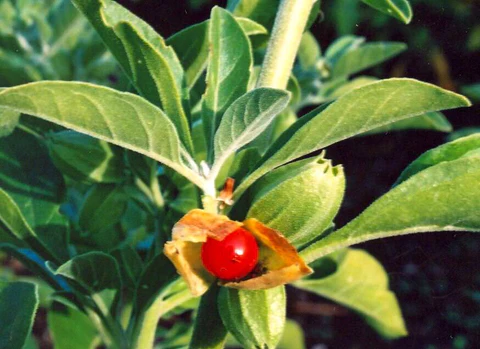
Ashwagandha is best known for stress Reduction, Neural Protection, and a Lot More from an Ancient Herb
The benefits of ashwagandha are many; in addition to promoting fertility, aiding in wound care, and boosting the immune system, some other benefits are:

Lemongrass has been reported to have innumerable therapeutic and other health benefits.

Bryophyllum calycinum, Bryophyllum pinnatum, also known as the Air Plant, Life Plant, Miracle Leaf, Goethe Plant and the Katakataka (Filipino)) is a succulent plant native to Madagascar.

RUVA, Purple ( Ekke, Rui,arka ) Calotropis gigantea
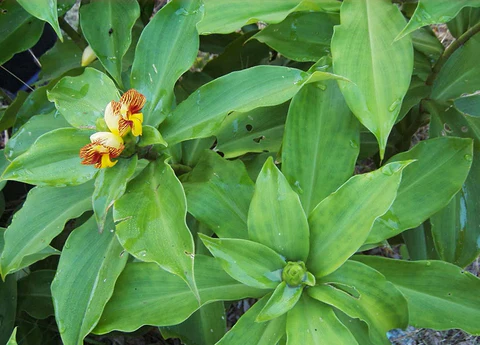
Costus igneus, commonly known as insulin plant in India, belongs to the family Costaceae. Consumption of the leaves are believed to lower blood glucose levels, and diabetics who consumed the leaves of this plant did report a fall in their blood glucose levels.
The fresh leaves of this plant is chewed two times daily for 1 week after 1 week, 1 leaf should be chewed twice a day this dosage should be continued for 1 month. It is said that this treatment is effective in bringing blood sugar levels under control in diabetes patients.

It has anti-inflammatory and antiseptic effects that provide relief from inflammations in circulatory system and nervous system. Khus khus is used to create a tonic bath, which is the reason why it is often included in high quality soaps.
It is a boon for individuals suffering from rheumatism, arthritis, gout, muscular aches, dryness and cracking of skin etc.
The oil obtained from khus khus has sedative effect and aids in the treatment of emotional outbursts, such as anger, anxiety, epileptic and hysteric attacks, restlessness, nervousness, etc.

Commonly known as the five-leaved chaste tree, is a large aromatic shrub with quadrangular, densely whitish, tomentose branchlets.
Key therapeutic benefits:
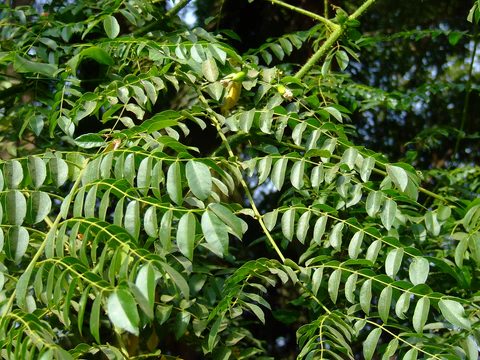
Sagargota, Bonduc nut, Fever nut, physic nut is used as anti diabetic & anti-malarial drug
Medicinal Uses :

With its steviol glycoside extracts having up to 300 times the sweetness of sugar,stevia has garnered attention with the rise in demand for low-carbohydrate, low-sugar food alternatives.
Because stevia has a negligible effect on blood glucose, it is attractive as a natural sweetener to people on carbohydrate-controlled diets.

The plant of which marshmallows were once made of. The root is taken internally to treat :

It requires moist soil and can grow shadeless. The great burdock is the pretty famous in the area of detoxification in both Chinese and Western herbal medicine. The root is is used to treat ‘toxic overload’ that result in throat infections and skin diseases like :
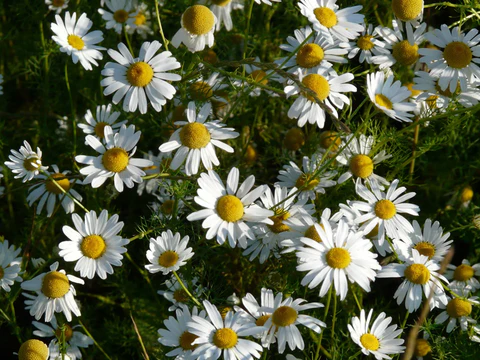
With a sweet, crisp, fruity and herbaceous fragrance, has long been used medicinally as a remedy for problems regarding the digestive system.
It has a soothing and calming effect in the area of aromatherapy, used to end stress and aid in sleep.
The entire herb is used to treat common aches like toothache, earache, shoulder pain and neuralgia.

A type of yam that can be eaten raw, the chinese yam can be easily grown, succeeding in fertile, well drained soil in a sunny position. It is sweet and soothing to the stomach, spleen and has a tonic effect on the lungs and kidneys. It is used internally to treat :

One of the world’s most important medicinal herbs, the echinacea has the capacity to raise the body’s resistance to bacterial and viral infections by stimulating the immune system. It also has antibiotic properties that helps relieve allergies. Basically, the roots are beneficial in the treatment of sores, wounds and burns.
It was once used by the Native Americans as an application for insect bites, stings and snakebites. The echinacea grows on any well drained soil, as long as it gets sunlight.

The siberian ginseng has a wide range of health benefits, mostly as a powerful tonic herb that maintains good health. Its medicinal properties are used for :
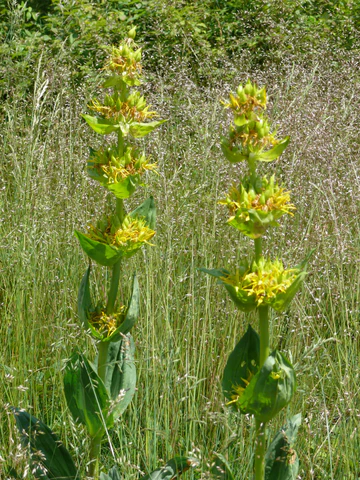
The great yellow gentian root is a bitter herb used to treat digestive disorders and states of exhaustion from chronic diseases. It stimulates the liver, gal bladder, and digestive system, strengthening the overall human body. Internally, it is taken to treat :

The sea-buckthorn has been used throughout the centuries in China to relieve cough, aid digestion, invigorate blood circulation and alleviate pain. The branches and leaves are used in Mongolia to treat gastrointestinal distress in humans and animals.
The bark and leaves are used for treating diarrhea, gastrointestinal, dermatological disorders and topical compressions for rheumatoid arthritis. Even the flowers are used as skin softeners.
The berries, on the other hand, are used together with other medications for pulmonary, gastrointestinal, cardiac, blood and metabolic disorders. Fresh sea buckthorn berry juice is known to be taken in the event of colds, fever, exhaustion, stomach ulcers, cancer, metabolic disorders, liver diseases, inflammation, peptic ulcer, gastritis, eczema, canker sores, general ulcerative disorders, keratitis, trachoma

Even the aborigines have been using the tea tree leaves for medicinal purposes, like chewing on young leaves to relieve headaches. The paperbark itself is extremely useful to them as it serves to line coolamons when used as cradles, as a bandage, like a sleeping mat, as material for building humpies, as an aluminum foil, as a disposable raincoat and for tamping holes in canoes.
The leaves and twigs, eventually made into tea tree oil, is anti-fungal, antibacterial, antiseptic and deserves a place in every household medicine box. Tea tree oil can be used to treat: cystitis, glandular fever, chronic fatigue syndrome, thrush, vaginal infections, acne, athlete’s foot, verrucae, warts, insect bites, cold sores, nits, minor burns